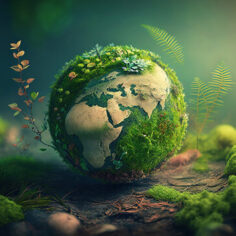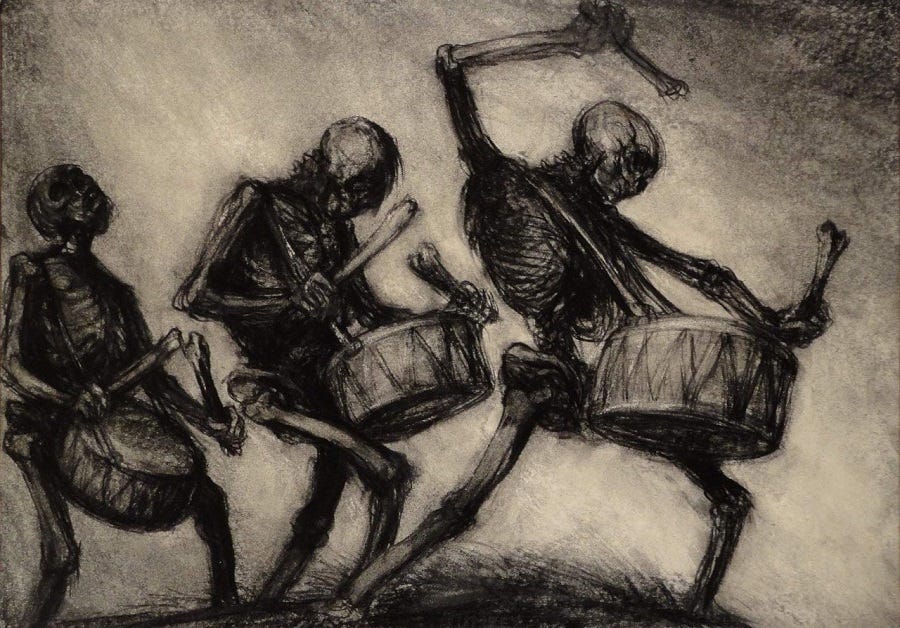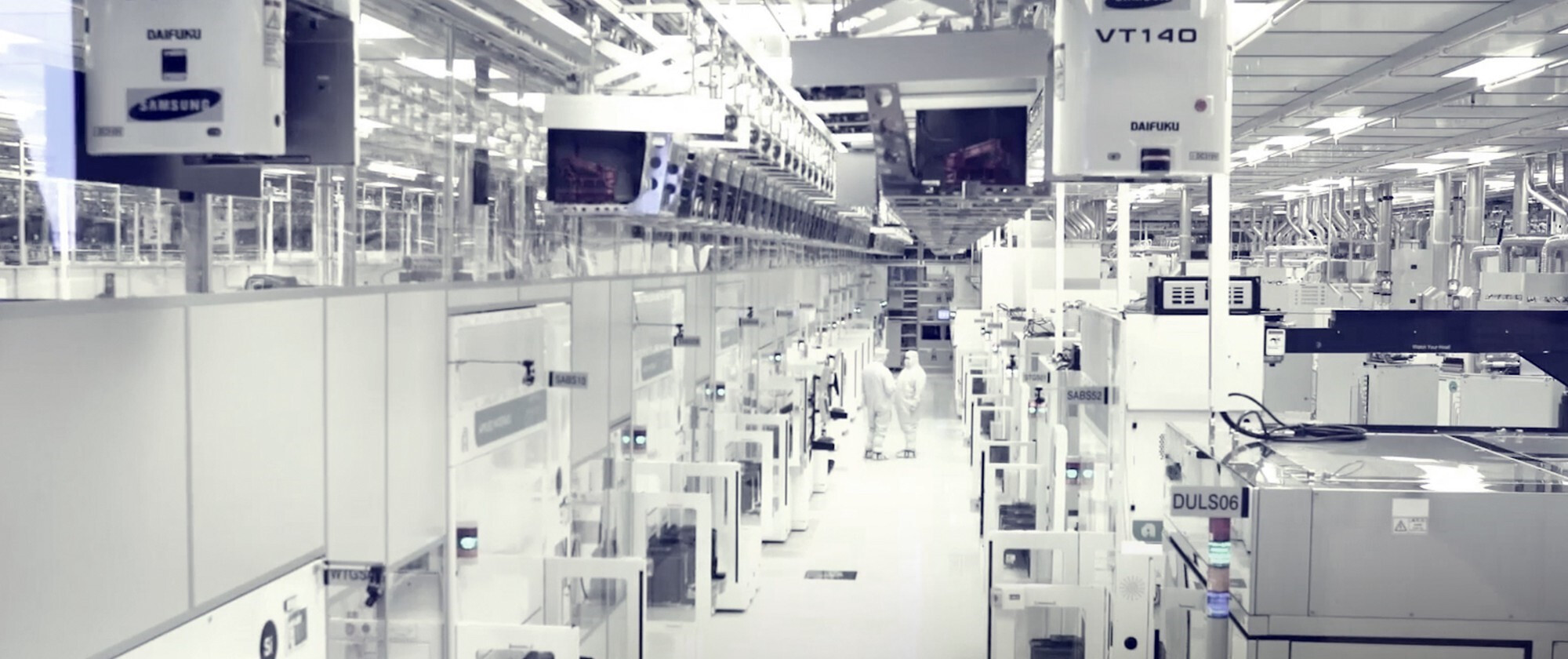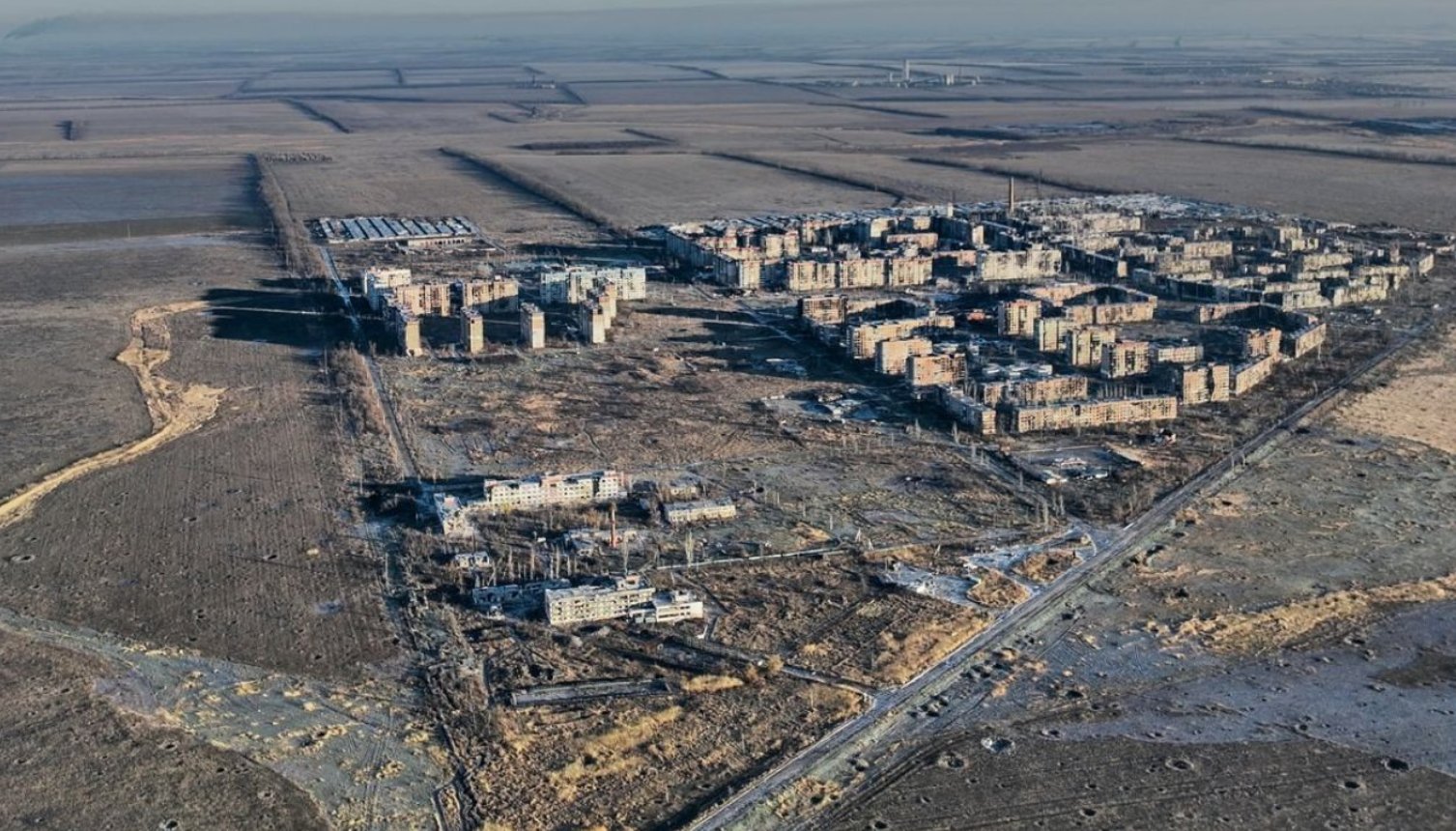This past summer, I spent a morning hunting for shrimp and prawns on a remote beach in Scotland. It was the kind of ritual interaction with nature that modern people have long prized: wading through tidal pools at the edge of a rough ocean, I felt I was stepping beyond the margins of the human world, into some purer, wilder element. And yet, as I sat sifting and cleaning the tiny crustaceans I’d gathered, I struggled to suppress a disturbing thought. It is very likely those organisms contained microscopic pieces of plastic.
Over the last two decades, it has become increasingly clear that plastic is everywhere. While the material is largely resistant to decomposition, it does degrade and shed small fragments, known as microplastics, which vary in size from millimetres down to microns and nanometres. These are now part of the fabric of our physical world. They have found their way into fresh Antarctic snow, and are accumulating in the deepest regions of the ocean. They are present up and down marine food-chains, and in agricultural soil. In Florida, plastic accounts for more than 1% of the body weight of some hatchling sea turtles.
The alleged microplastic discoveries extend deep into our own bodies as well, in a morbid list of nouns: lungs, heart, liver, intestines, blood, semen, penises, testes, placenta, breast milk. Most recently, their presence has been reported in the olfactory bulb of the brain. And the build-up of plastic is only going to grow. We produce more than 400 million metric tonnes of it every year, and that is predicted to increase by 70% by 2040. Plastics are now used in an enormous range of products — in clothes and carpets, paint and pipes, buildings and roads, tea bags and cigarette filters. Very little is recycled: less than 5% in the United States, which is by some margin the biggest consumer of plastic on a per-person basis. In any case, it would be more accurate to say down-cycled, since most discarded plastic can only be reconstituted in lower-grade forms. According to a widely cited estimate, the equivalent of a truckload of plastic waste enters the ocean every minute.
If some of this will end up in our bodily tissues, the question, naturally, is how harmful it is. The answer is that we aren’t sure. Various pathologies caused by plastic ingestion have been observed in wild animals, such as the scarring of sea birds’ digestive tracts. Plastic shreds can also act as vectors for toxic, hormone-disrupting chemicals such as Phthalates and Bisphenol A, which are used in the fabrication process. Lab studies have linked microplastics to a range of nasty-sounding effects, but the extent to which these are occurring inside the body is still unclear. Microplastics may help to explain falling sperm counts, neurodegenerative diseases and rising cancer rates in young people — but then again, they may not.
For the time being, then, microplastics are as much a cultural phenomenon as a medical one. With so much uncertainty surrounding their effects, they tell us more about the anxieties that lurk in our minds than the health of our bodies. In fact, they tell us something important about our relationship with the modern world itself.
Plastic has a claim to be one of the great human achievements of the past century. In 1941, two British chemists anticipated the coming age of “Plastic Man”, who would live in a world where “man, like a magician, makes what he wants for almost every need”. In the following decades, as scientists learned to arrange hydrogen and carbon atoms in long chains of molecules, known as polymers, they gradually made this vision a reality. For the first time, human beings could make materials with properties of their choosing, whether firm or malleable, wearable or tearable, waterproof, heatproof or indeed bulletproof.
As consumer culture flourished in the Sixties, plastic was marketed as fun, colourful and disposable, signifying a miraculous affluence after decades of depression and austerity. Researchers found many useful applications for plastic too, discovering, most notably, that polyethylene packaging could extend the shelf life of fresh food. Lightweight, mouldable, durable and affordable: this combination of properties, unique to plastic, has made it indispensable to all kinds of products we use on a daily basis.
But if plastic marked the ultimate triumph of human beings as artificers — allowing man to “make what he wants for every need” — then this is also, today, what has given it a sinister quality. Throughout the modern era, the development of increasingly complex, artificial societies has produced an undercurrent of reverence for the purely natural, the “unspoilt”. Even as we enjoy the products of science and technology, we designate certain spaces as natural, and seek to protect them from the corrupting forces of modernity. These natural domains include not just wild and bucolic places — places like that Scottish beach, for instance — but also the human body, childhood, and vestiges of traditional culture. Ironically, while capitalism is broadly understood to endanger these sacred domains, it also encourages us to worship them, with its health foods and organic cosmetics, its tourist industries and escapist entertainment.
If we know one thing about plastic, it’s that it is unnatural. And so, even before an awareness of microplastics gave “Plastic Man” a terrible new meaning, the burgeoning prevalence of plastic things had become a source of anxiety. Writing in the Atlantic some years ago, Jamie Passaro described the struggle that parents face in choosing products for their children. The villain of the piece is her daughter’s favourite doll, which Passaro took an instant dislike to. “Everything about her plastic body seemed artificial,” she wrote, “Her skin was a peachy shade like a spray tan. Her painted-on blue eyes seemed startlingly wide, like someone slipped her an energy drink… Her body was too hard to bend, though her arms and legs and neck could swivel all the way around.” In the appropriate context, plastic is reassuringly clean and sterile; but when it invades a natural realm, such as the innocence of a child, it can suddenly appear garishly fake, even obscene.
And therein lies the peculiar horror of microplastics. These invisible particles, spreading like an infectious disease, render everything vulnerable to our unhealthy, synthetic culture. They do not simply pollute; they contaminate. Reporting on the subject, even in dry factual newsprint, pulses with an almost lurid revulsion as it relates how another precinct of nature, whether inside us or around us, has been violated by plastic. As Mark O’Connell has observed, microplastics cross the political divide as few other issues do, haunting progressives with a new phase of ecological destruction, and conservatives with a chemical threat to fertility and masculinity. Yet these are just different expressions of the same modern neurosis about the contamination of the natural.
Such fears are not necessarily misguided — microplastic pollution may turn out to be as disastrous as the pessimists suspect — but they do suggest a failure to comprehend the artificiality which pervades the modern environment, for better and for worse. Our distinctions between natural and unnatural, though sometimes useful, are usually inconsistent and arbitrary, based on aesthetic preferences more than anything. Thus Passaro found out that her daughter’s doll might be made of PVC, in which case it really could be dangerous; yet she was surprised to learn that the more “natural” toy she bought as a substitute, a Swedish-designed cloth baby, was also plastic in its polyester form.
Plastics are made using petrochemical by-products from the fossil fuel industry, but so too are the pharmaceutical substances that keep us healthy, and the fertilisers that grow our food. Many of those crops also require chemical pesticides, just as our water requires chlorine to be drinkable. Alternatives to plastic, such as paper, glass and cotton, often use more resources, produce more carbon emissions, and create their own forms of pollution. Asbestos, lead and mercury turned out to be toxic; but so did smoking tobacco and cooking with firewood and crop residues. Hormonal interference is widespread in the form of birth control. Tiny metallic particles, small enough to enter the bloodstream, waft through the London Underground in much the same way as microplastics.
To live in the modern world is to be a deeply artificial creature, a monstrous hybrid of biological processes, synthetic chemicals and industrial pollutants. It has been decades since any significant number of people on the planet have lived otherwise, and those who come closest tend to be extremely poor. Microplastics simply underline the totality of this condition; however fastidiously you try to carve out a more natural existence, however far you run, you will still be at risk of inhaling and ingesting substances designed in laboratories, used to fabricate shopping bags and Coke bottles.
And this will, presumably, be the case for many generations. Next month, in South Korea, the United Nations will discuss a treaty to reduce global plastic production. But even if this comes to fruition — unlikely, since it lacks Chinese support — the plastic we have already made, and continue making, will still be with us. So we will learn to live with this plague, not because we should, but because we have no choice. No doubt it is precisely to cope with such strange circumstances that we cling to our simplistic ideals about natural places and natural bodies.
Source: UnHerd













No comments.
By submitting a comment you grant Free West Media a perpetual license to reproduce your words and name/web site in attribution. Inappropriate and irrelevant comments will be removed at an admin’s discretion. Your email is used for verification purposes only, it will never be shared.